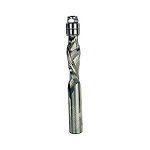Bugsysiegals
Member
- Joined
- Mar 19, 2016
- Messages
- 908
I’m gluing 3/4” X 3/4” Walnut to 3/4” Maple plywood shelves and am wondering the best way to make the Walnut flush to the plywood. It’s proud of the plywood by no more than 1mm and in some spots closer to flush already.
I have the Bench Dog router table extension on my table saw with Incra fence system. I considered mounting some MDF to it in order to create a higher fence to run the shelf against with a gap on the bottom. The shelves are 28” deep so I wasn’t sure how well this would work while standing up.
I have the OF1400 router which wasn’t recommended with the adapter to go on its side; however, I’ve seen some jigs people mount to the bottom which allows the bit to go over the edge banding while the jig still sits on the plywood to flush cut. I’m not certain how well this works and if cutting perpendicular is a decent cut or not.
Or, I could buy my first hand plane and see how difficult it would be to make a nice finish. If this is best, I’d buy a Lie Nielsen but need to know which model would work best or provide best versatility overall and work well for this since I probably won’t buy another for another until Christmas.
I have the Bench Dog router table extension on my table saw with Incra fence system. I considered mounting some MDF to it in order to create a higher fence to run the shelf against with a gap on the bottom. The shelves are 28” deep so I wasn’t sure how well this would work while standing up.
I have the OF1400 router which wasn’t recommended with the adapter to go on its side; however, I’ve seen some jigs people mount to the bottom which allows the bit to go over the edge banding while the jig still sits on the plywood to flush cut. I’m not certain how well this works and if cutting perpendicular is a decent cut or not.
Or, I could buy my first hand plane and see how difficult it would be to make a nice finish. If this is best, I’d buy a Lie Nielsen but need to know which model would work best or provide best versatility overall and work well for this since I probably won’t buy another for another until Christmas.

